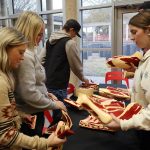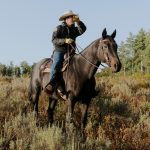HHS and USDA confirm singular traveler-associated new world screwworm case

Screen Shot 2024-12-03 at 12.40.49 PM
U.S. Department of Health and Human Services and the U.S. Centers for Disease Control and Prevention recently identified an instance of a traveler-associated human case of new world screwworm (NWS) in the United States. The U.S. Department of Agriculture reaffirmed its robust surveillance and trapping strategy, confirming there have been no detections of NWS in U.S. livestock.
Under President Trump’s leadership, USDA, HHS, CDC, FDA and our other federal partners have led a robust government wide response to combat the NWS in Mexico and prepare for all scenarios if it enters the United States. On Aug. 4, 2025, CDC, in coordination with the Maryland Department of Health, investigated a confirmed case of travel-associated NWS in a patient who returned from travel to El Salvador. As this is a human case, CDC is the lead response agency and is conducting an epidemiological assessment in coordination with local health authorities. Currently, the risk to public health in the United States from this case is very low. In support of CDC’s activities and out of an abundance of caution, USDA initiated targeted surveillance for NWS within a 20-mile radius of the affected area, encompassing portions of the District of Columbia, Maryland and Virginia. To date, all trap results have been negative for NWS. There have been no detections of NWS in the U.S. in livestock or other animals since the last outbreak of NWS in the Florida Keys was resolved in 2017. There have been previous instances of traveler-associated cases of NWS in the United States in years past. In all cases, these instances were isolated and designated as closed after precautionary targeted surveillance in the vicinity was negative. We may continue to see traveler-associated cases of NWS and USDA, in coordination with HHS and CDC, will conduct targeted surveillance to ensure there is no active spread of NWS in the United States. This is not cause for alarm as human risk is low and we have seen several isolated cases in recent years that have not resulted in livestock transmission.
In June 2025, Agriculture Secretary Brooke Rollins announced a comprehensive five-part plan to strengthen the U.S. Department of Agriculture’s efforts to detect, control, and eliminate new world screwworm, pushing the pest back from Mexico to the biological barrier in eastern Panama. A key part of this plan is trapping along the U.S.–Mexico border to proactively monitor for the pest out of an abundance of caution and it includes building a domestic sterile fly production and dispersal facility to increase our readiness and response efforts. Public health and safety and our joint effort to combat the northward spread of NWS from Mexico into the United States is the top priority of USDA and HHS.





